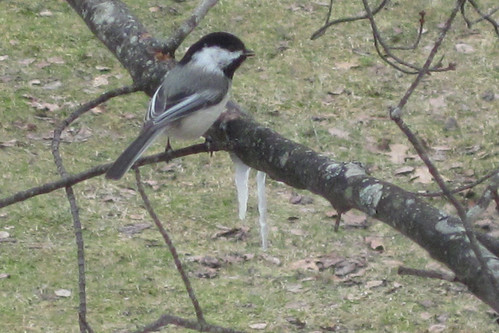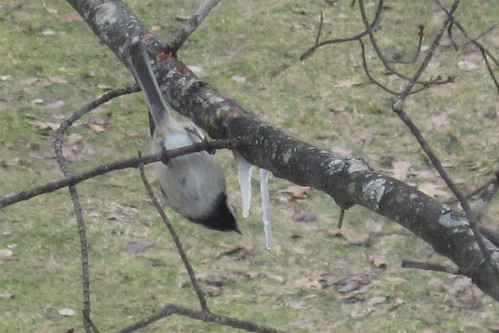 |
| A Chickadee perches next to Sapsicles in the famous Red Maple at the North Branch Nature Center |
Anyone who has collected enough sap
buckets has likely seen icicles hanging from the tap as the sap freezes on cold
days. Even non-sugar-makers can see “sapsicles” dangling from branches
and trunks of maples and other trees where the sap oozes from open wounds.
The sapsicles form slowly, as drops of liquid sap come in contact with freezing
air. Slowly, they grow, trapping the sugary sap out of reach of most
creatures.
They continue to grow until temperatures
warm, and then they slowly begin to melt. The drops of sap trickle to the
bottom of the sapsicle, where they hang until they become heavy enough to
fall. Other watery drops evaporate into the air, while some ice sublimes
(turns directly into water vapor). As
this happens, the sugary solution becomes more concentrated. I have watched chickadees hover at sapsicles
in the Red Maple outside my office window, drinking up the sweet drops.
Red Squirrels, too, will drink sap (they actually tap their own trees!).
Over the next week, keep your eye
out for sapsicles… nature’s ice pops!
 |
| The Chickadee hangs upside-down to sip up the sweet maple sap! |

No comments:
Post a Comment